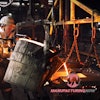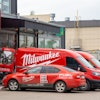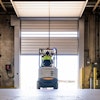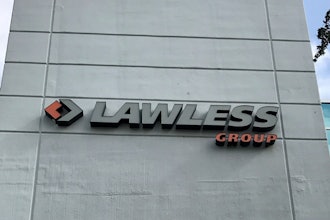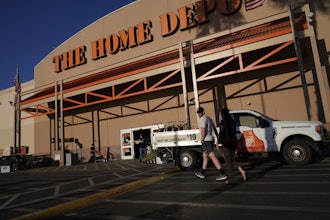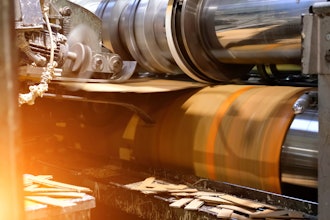Everyone thinks about the worst case scenario. For your operation, it could be a serious safety incident. Or maybe it’s an issue of how your chemicals are stored, or what a power outage might mean. Perhaps you’ve watched on the news as a business contends with a natural disaster and wondered — how would we react?
The scary thing about emergency preparedness is that you need to be prepared for anything. For many industrial companies, this applies not only to protecting your equipment and your productivity, but also your people.
Is Everybody Out?
“With more natural disasters and tighter OSHA requirements, safety and emergency preparedness has become an increasingly hot topic,” explains Steve Bardocz, owner of Savance, provider of network and software solutions that automate business processes. “Manufacturers are under even tighter scrutiny since an incident could potentially lead to bad publicity or even a death toll.”
The first priority in a life-threatening emergency is making sure everyone in the facility is accounted for, a process for which many businesses rely on sign-in sheets. Unfortunately for most, this process is prone to human error. “Most sign in and never sign out. Some don’t sign in at all,” says Bardocz. With oftentimes one sign-in sheet at the front entrance and another in the back, and staff and visitors handled on separate sheets, “the process of taking roll call is unorganized at best. The time to figure out if someone is missing could be the difference between life and death.”
Savance’s Offline product was specifically defined as a tool companies could use to improve emergency preparedness. Says Bardocz, “Picture this — a furnace overheats in one part of the plant, causing an evacuation. Chaos sets in as employees realize this is not just a drill. Fire trucks and EMS arrive on the scene in minutes, and the first thing they need to know is, ‘is everyone accounted for?’” Savance’s EIOBoard system is designed to create digital tracking, so staff scan their badges on the way in and out, which automatically lets the system know they are present. Additionally, visitors sign in and out with a touch-screen kiosk, while acknowledging safety conformance questions. The information, along with emergency contacts, are stored and accessible, allowing staff to take roll call based on an accurate list of who is actually in the building at the time of the incident.
“When you’re truly prepared,” says Bardocz, “you can literally save a life. Performing safety drills and using the right procedures, processes, and tools is the only way to increase preparedness.”
Emergency Egress
In the event of a disaster that requires evacuation, it’s important that businesses create a safe exit strategy for employees. It should never be taken for granted that there will be functioning power or lighting, therefore businesses need to consider how to exit the building safely when their utilities are compromised. The company American PERMALIGHT, Inc. helped evacuees of the World Trade Center find their way out on 9/11, via photoluminescent egress path markings on the emergency staircases. Because of the findings following this catastrophic event, new non-electrical exit path marking requirements were established for New York city high rise buildings. And, says Marina Batzke, General Manager of American PERMALIGHT, Inc., the IBC (International Building Code) and IFC (International Fire Code), followed suit in 2009, adopting the requirements for Lumimous Egress Path Markings in high-rise building emergency staircases worldwide.
Batzke stresses that, despite the fact that most buildings have electrically activated emergency lighting installed, “it does not work if the batteries are not maintained, or if generators do not kick in during an emergency.” So, as a supplement to these other products that could fail due to human error, photoluminescent markings are available to mark escape paths around machinery, equipment, and shelves. “The non-electrical markings can withstand high-pressure steam cleaning, and special durable metal floor markers resist forklift traffic,” says Batzke. “And all of this is without electrical connection, with no light bulbs that could break, and virtually no maintenance.”
Being Proactive About Safety
They say prevention is the best medicine, therefore continually monitoring the workplace for safety risks, as well as defining protocols in the event of an emergency, is critical. But according to Courtney Bohman, product marketing specialist for Brady, a leader in spill containment kits – these protocols are only as good as their ability to be communicated effectively to the team as a whole. “Even the most safety conscious facility can be weakened by an emergency event,” says Bohman. “If workers are not aware of and trained on emergency protocols, a facility’s safety program cannot be considered complete. In this way, safety, security, and emergency preparedness truly go hand in hand.”
And besides worker protection, Bohman stresses that there is a financial incentive to maintain a safe environment for workers. “A single breach of compliance with OSHA standards can result in significant fines for the facility. The most frequent citation plaguing manufacturing facilities is worker fall protection, followed closely by proper hazard communication.”
Since access to the appropriate products can help reduce a facility’s likelihood of non-compliance, Bohman recommends absorbents as “an excellent way to clean up spills and reduce the likelihood of slips, trips, and falls. These products are also a great way to control leaks, allowing machinery to run continuously, which reduces lost revenue due to downtime,” Bohman adds. Modern improvements on old solutions include Brady’s High Visibility Safety Mat, something global product manager Carlo Emanuele describes as both a hazard alert sign and an absorbent. “By incorporating warnings and messages right at the point of a leak, drip, or spill, workers can easily identify the risk and use caution. This approach helps to significantly reduce the threat of slips, trips, and falls in the workplace, leading to improved OSHA compliance and employee safety,” Emanuele says.
Bohman adds that spill kits should be “a mainstay in all facilities,” and recommends they be positioned throughout the facility in the applicable sizes and applications.

